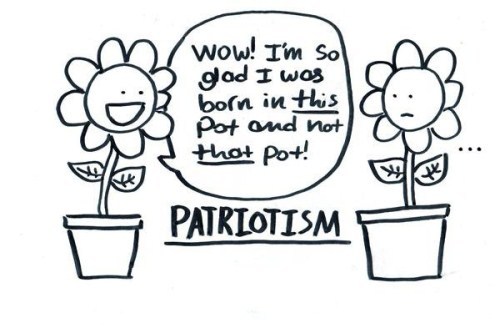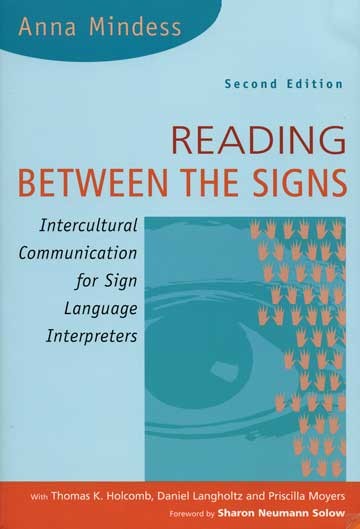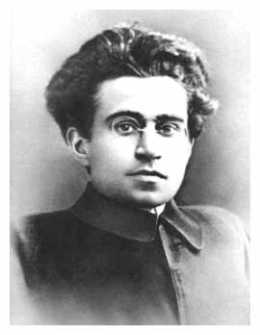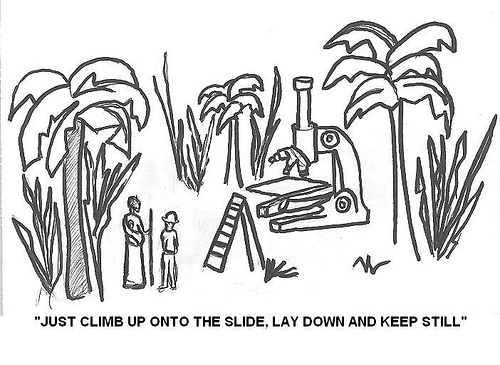This post cannot answer the title question thoroughly. Nor is this a “study” of Deaf individuals’ narrative frameworks for understanding ASL and culture. (Interestingly, no such research exists.) Rather, this is an attempt to understand how ASL and Deaf culture have been conceptually linked, and how this particular link between language and culture is a double-edged sword.
In his 2005 article on “Ethnicity, Ethics, and the Deaf-World”, Harlan Lane provides a well-argued critique of applying the term disability to Deaf individuals. Lane suggests that hearing people should view the Deaf community as an ethnicity, and he provides long list of properties which are intended to demonstrate that Deaf people are an “ethnicity”: language, kinship, “the arts”, social structure, values, knowledge, customs, etc. In the short paragraph describing language, Lane quotes well-known linguist, Joshua Fishman, in defense of language as a primary ethnic marker. I’ll quote the entire paragraph:
“‘The mother tongue is an aspect of the soul of a people. It is their achievement par excellence. Language is the surest way for individuals to safeguard or recover the authenticity they inherited from their ancestors as well as to hand it on to generations yet unborn’ (Fishman, 1989, p. 276). Competence in ASL is a hallmark of Deaf ethnicity in the United States and some other parts of North America. A language not based on sound is the primary element that sharply demarcates the Deaf-World from the engulfing hearing society.” (Lane 2005)
Anyone with a week of experience in the Deaf community will grasp the common sense of this statement. As Mindess quotes in an epigraph on page 110 (a quote from Schein 1989) of Reading Between the Signs, “For many members of the Deaf community, they and ASL are indistinguishable. Their self-concept is based on being Deaf and being Deaf to them means using ASL.” Interpreting students learn this simple fact from Stewart, Schein, and Cartwright (1998), too: “ASL is the language of the Deaf community.” (134) Minor quibbles aside, these are rather incontestable observations as far as I can tell. And they are – or should be – foundational knowledge of sign language interpreters.
But there is something missing for me.
Something is Missing
What’s missing for me is a history of the ideas that make the Deaf community a community – or ethnicity, or culture, or linguistic minority – and which therefore make interpreting a profession in the first place. I hope the following illustration explains what I think is missing from our current literature and creates an opening for further discussion within interpreting in the future. (See post What Do Interpreters Need to Accomplish?)
If we could summarize the above quotes in a brief assertion that sounds like anthropology 101, it would go something like this: “Language is one of the primary markers of distinct social groups.” This has been true for as far back as the historical record shows. But there’s a twist. It wasn’t until the 18th and 19th centuries that language took on a particularly powerful role in defining social groups in the sense that we think of it today.
What is language and culture?
The main figure in this evolution is Johann Gottfried von Herder (according to Peter Watson in The German Genius). Locke claimed that language was a natural phenomenon, not a divine gift – a transformation in thought that interpreters should certainly revisit. But it was Herder who gave language a new power it didn’t have before. It’s worth quoting from Watson’s book at length:
“Language identifies a Volk or nationality, and this, the historico-psychological entity of the common language, is for him ‘the most natural and organic basis for political organisation… Without its own language a Volk is an absurdity (Unding). … A Volk, on this theory, is the natural division of the human race, endowed with its own language, which it must preserve as its most distinctive and sacred possession.”
Herder should also be known for his advocacy a rather new idea at the time: culture. For Herder, “whatever the ‘collective consciousness’ of a Volk was at any particular time, was its culture.” (The term Zeitgeist – the spirit of the times – was Herder’s neologism.) For Herder, these concepts of Volk, language, culture, and nation are all intertwined. Ultimately, all of these features reach their height in the establishment of a nation-state, a political organization which has the authority to represent the political will of the people – in fact, the state itself is the political will of the people.
Why does this matter?
First, I think Herder’s original writings are more philosophically robust than most of what we find in interpreting literature today. This is not a criticism of books about interpreting, but it suggests that there is much to be gained from reading the original texts of thinkers who we often think of as old and irrelevant. This may not interest most working interpreters. But working interpreters deserve to know that it hasn’t interested scholars in Deaf studies and interpreting either. In other words, despite about 50 years of scholarship in our field, we still don’t know where our ideas came from. This is no small matter. And it would be a great topic for a MA thesis is anyone out there is thinking of going back to school. (See post All Interpreters are Philosophers.)
Second, I think we can detect in these excerpts the double-edged sword that is about to fall on Western civilization. This is a bit more complex, but it is very important. When Herder argues that language is the most natural, authentic characteristic of social groups, he is lending support to the idea that “natural divisions of the human race” exist, and therefore can’t be challenged. This is known today as essentialism. And he is lending support for the newly-formed nation-states of Europe. By 1945, these European states and their many counterparts in the Third World will have experienced a century of nearly unending conflict and war precisely on the basis of these “natural” human divisions. Horkheimer and Adorno will later call this the “triumphant calamity” of the enlightenment. (See The Culture Bargain post.)
Third, this is the time (late 1700s, early 1800s) that what we now call the Deaf community was beginning to take its modern form in Europe and the U.S. Notably, early texts written by Deaf individuals refer to themselves as a “nation”, not as a culture. Culture didn’t take on its modern meaning in English until the 1860s, and didn’t fall into common use until the 20th century. Interestingly, when it did enter English in the 1860s, it was introduced by German-trained anthropologists who were trying to identify and categorize Herder’s “natural divisions of the human race”. In other words, the term culture has a particularly colonial ring to it. Culture, like Herder’s theory of language, is going to but both ways against the emerging Deaf community. The Deaf community will see itself as a “nation” during the 1800s, and by the late 1960s, see itself as a “culture” (with the aid of hearing academics, no small matter, indeed). But culture and language are also going to be the tools of oppression. Deaf people do not have Herder’s nation-state to back them up. Quite the contrary, it will be the ASL users themselves who will later be seen as deviating from the national cultural model. (See Anthropology’s Culture Problem post.)
Our ideas using us more than we are using our ideas
Lane was right: ASL matters to Deaf culture. But when we claim, as we often do, that language and culture are inseparable, it can make it seem as if this is how it has always been since the beginning of time. Or it seems that this way of thinking is “natural”. In fact, this idea is relatively recent. And this idea has cut both ways, sometimes hurting the Deaf community, sometimes empowering the Deaf community. Without attention to where these ideas came from, I can’t help but think that we are captive to these ideas. When we are captive to our ideas, it becomes hard to imagine a different world and our options for advocacy are stunted, hampered, restricted. Our ideas using us more than we are using our ideas. It is worth our time to excavate these ideas and enrich our ability to be excellent interpreters and strong advocates.
This is not a definitive answer to the question, “Why Does ASL Matter to the Deaf community?”. But it is an often-overlooked part of a larger answer.
List of references:
- Lane, H. L. (2005). Ethnicity, Ethics, and the Deaf-World. Journal of Deaf Studies and Deaf Education, 10(3), 291–310. doi:10.1093/deafed/eni030
- Mindess, A. (1999). Reading Between the Signs: Intercultural Communication for Sign Language Interpreters. Intercultural Press.
- Stewart, D. A., Schein, J. D., & Cartwright, B. E. (1998). Sign language interpreting: Exploring its art and science.
- Watson, P. (2011). The German Genius: Europe’s Third Renaissance, the Second Scientific Revolution, and the Twentieth Century. HarperCollins.






